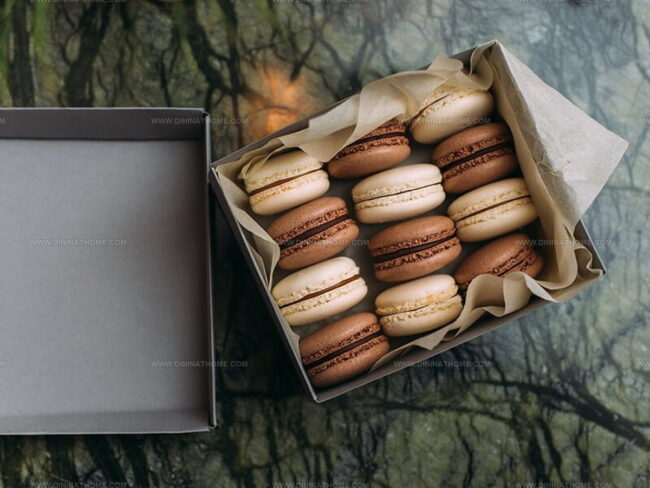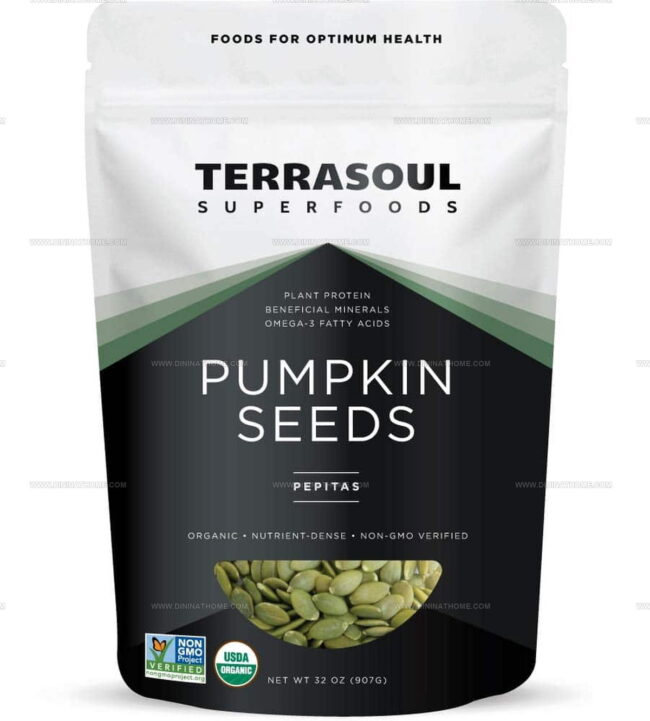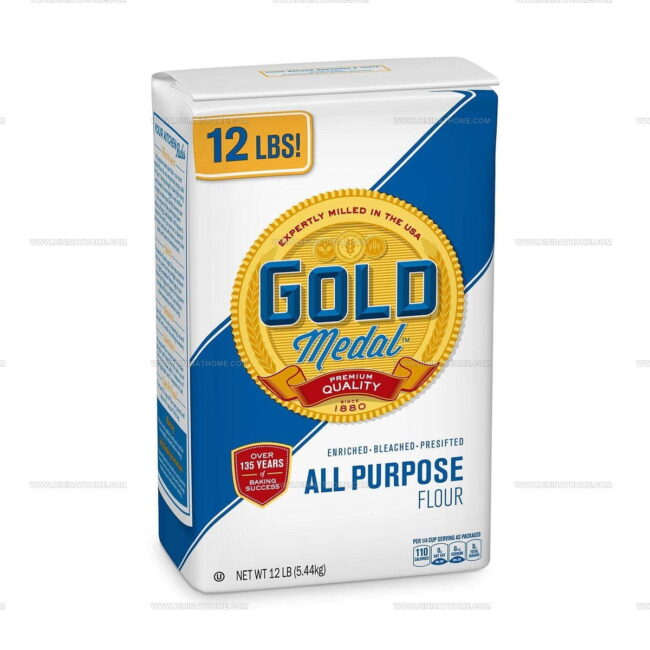3 Almond Flour Replacements for Perfect Macarons
Substitutes for almond flour in macarons can completely transform this classic French delicacy while maintaining its delicate texture and flavor profile.
Nut allergies or simply an empty pantry shelf at a crucial moment often prompt bakers to seek alternatives.
The quest for perfect alternatives often leads down interesting culinary paths with surprisingly delightful results.
Alternative options range from seed-based flours to more unexpected ingredients that mimic the fine texture needed for those signature smooth tops and frilly "feet." Each replacement brings its own unique characteristics to the final product, sometimes creating versions that true macaron enthusiasts might actually prefer over traditional recipes.
The subtle differences in absorption rates and fat content mean some adjustments may be necessary when switching ingredients.
These clever substitutions open up a whole new world of macaron possibilities that you can enjoy regardless of dietary restrictions or ingredient availability.
Ready to see which alternative might become your new secret ingredient for perfect macarons?
Why Almond Flour Is Essential for Macarons
Almond flour is a key ingredient in classic French macarons, and it plays an important role in both their unique texture and delicate flavor, making it nearly impossible to get the same results with anything else:
Nut-Free Almond Flour Replacements for Macarons
Almond flour not available for macarons? No need to give up. A nut-free alternative can keep the batter workable, and you’ll still pipe out treats worth showing off.
Pumpkin Seeds
Pumpkin seed flour offers a fantastic alternative for macaron bakers looking to switch up their recipes or accommodate nut allergies.
The swap is simple - just use a 1:1 ratio in place of almond flour to create equally chewy, melt-in-your-mouth treats that maintain the classic macaron texture.
Making this flour at home requires nothing more than processing raw pumpkin seeds in a food processor, though store-bought options are readily available for convenience.
Most people don't have allergic reactions to pumpkin seeds, making them a safer option for sharing baked goods with others.
All-Purpose Flour
Substituting all-purpose flour for almond flour in macarons can work in a pinch when your pantry is running low.
This widely available ingredient, made from wheat endosperm, serves as a reasonable alternative despite producing slightly different results than the traditional recipe.
The versatility of all-purpose flour extends beyond macarons to numerous culinary applications including baking, thickening sauces, and creating crispy coatings for various foods.
People with nut allergies particularly benefit from this swap, using a simple one-to-one ratio for straightforward conversion in recipes.
Oat Flour
Substituting oat flour for almond flour in macarons can create equally delicious treats, especially if you have nut allergies or simply ran out of almond flour.
The direct replacement works well, though oat flour lacks the distinctive nutty flavor that almond flour provides in baked goods.
Most desserts made with this substitute maintain their chewy, moist texture, with macarons sometimes turning out even chewier than their almond-based counterparts.
These substituted macarons still develop the characteristic "feet" during baking, which is a key feature of well-made macarons.
Tips for Achieving the Classic Macaron Shell With Alternatives
If you want to make macarons but can’t use almond flour, you can still get a similar look and texture by choosing the right alternatives and following a few important tips:
Choose a Fine Alternative
Use finely ground sunflower or pumpkin seed flour for a neutral flavor and similar fat content to almond flour. Sift well to remove lumps for a smoother shell.
Keep It Nut-Free
For allergies, choose seed-based or oat flour, but note that these will slightly change the flavor and color of your macarons.
Adjust for Moisture
Some alternatives absorb liquid differently than almond flour. Start with less and add more as needed until you reach a thick, lava-like consistency.
Add Extra Sifting
Sift flour and powdered sugar mixture several times to break up clumps and help shells turn out shiny and even.
Mix Gently
Fold batter carefully in the macaronage stage, stop when it flows in thick ribbons but before it gets runny.
Rest Before Baking
Let piped shells rest until a thin skin forms; this helps create classic “feet” and keeps tops smooth.
Watch Baking Time
Alternative flours may brown faster, so check macarons early and lower oven temperature if needed to avoid overbaking.
Expect Slight Differences
Seed or oat flour macarons can be tasty and pretty, but expect the texture to differ a bit from classic almond versions.
Almond Flour Alternatives for Macarons: FAQ
1. Are there nut-free alternatives to almond flour for macarons?
Sunflower seed flour and pumpkin seed flour are both nut-free and mimic the texture of almond flour in most macaron recipes.
2. Can I use coconut flour instead of almond flour?
Coconut flour is not recommended because it absorbs too much moisture and changes the structure, resulting in dense or crumbly macarons.
3. Will a substitute work for colored or flavored macarons?
Yes, most seed and nut flours can be colored or flavored just like almond flour, but the final taste will differ.
4. Are there gluten-free almond flour substitutes for macarons?
Yes, all seed and nut flours listed are naturally gluten-free, making them suitable for gluten-free macarons.
5. Can I make my own seed or nut flour at home?
Absolutely, grind raw, unsalted seeds or nuts in a food processor until very fine, then sift to remove any coarse bits.
6. Will using a substitute affect the appearance of my macarons?
Some flours, like sunflower seed, may react with baking soda or powder and turn slightly green, but flavor and texture will remain.
7. Are almond flour substitutes suitable for vegan macarons?
Yes, as long as you use an egg-free base (like aquafaba), seed and nut flours can be used for vegan macarons.
8. How should I store macarons made with flour substitutes?
Store finished macarons in an airtight container in the refrigerator and enjoy within a week for best texture and flavor.






James Walker
Lead Recipe Developer & Culinary Educator
Expertise
Southern Cuisine & Farm-to-Table Cooking, Recipe Development & Testing, Culinary Education & Instruction
Education
School: Auguste Escoffier School of Culinary Arts
Program: Diploma in Culinary Arts and Operations
Focus: Comprehensive training in classical and modern culinary techniques, kitchen operations, and farm-to-table practices.
James didn’t learn cooking from a TV show, he learned it from busy kitchens, family gatherings, and long afternoons spent testing recipes the hard way.
After training at the Auguste Escoffier School of Culinary Arts, he brought his love for real, down-to-earth food to every dish he makes.
At Dining At Home, James loves building recipes that feel familiar but still have something special, like adding a twist to a classic or making a slow Sunday dinner feel brand new.
When he’s not in the kitchen, you’ll probably find him swapping garden tips at the farmers’ market or teaching his daughter how to flip pancakes without a mess (almost).